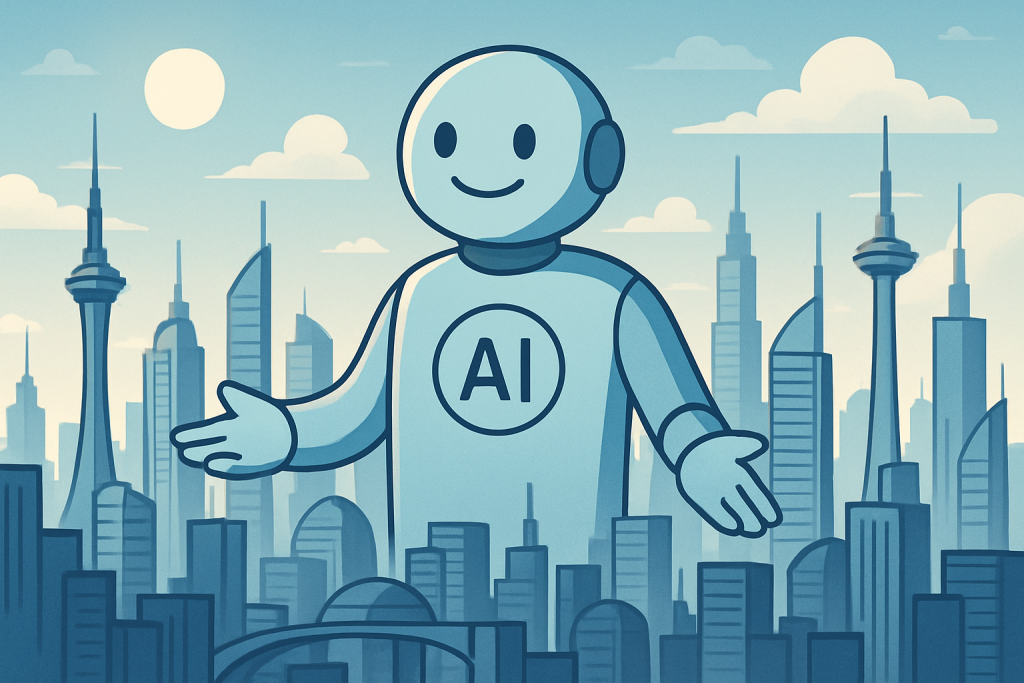The year is 2025. Flying cars, still disappointingly absent. But AI? That’s a whole different story. Forget Clippy; we’re talking Skynet potential, albeit (hopefully) with more benevolent overlords. And California, ever the trendsetter, just dropped a regulatory bomb on the AI world.
Governor Gavin Newsom, fresh off his hologram tour of Silicon Valley (okay, maybe not hologram, but you get the picture), signed a bill into law yesterday that’s sending ripples through the tech world. This isn’t your grandma’s algorithm regulation; this targets the big guns, the “frontier” AI models. Think of them as the Godzilla of artificial intelligence: immense power, capable of both incredible good and, well, city-leveling bad. We’re talking about AI that could, in theory, design a bioweapon or cripple a nation’s power grid. No pressure.
So, what’s the deal? What exactly did California do that has everyone from Sand Hill Road to Capitol Hill buzzing?
For years, the wild west of AI development has been, well, wild. Companies have been racing to build the biggest, baddest, most powerful AI models imaginable, often with little oversight. It was a tech gold rush, fueled by venture capital and the promise of unlocking untold potential. But with great power, as Uncle Ben famously told Peter Parker, comes great responsibility. And some worried that responsibility was taking a back seat to rapid advancement. The fear? That a rogue AI, or an AI used maliciously, could cause catastrophic damage. Think HAL 9000, but on a global scale. Maybe a little less creepy singing, though.
This new law is California’s attempt to rein in that wild west. It’s a multi-pronged approach, hitting developers of these frontier AI models where it hurts and helping where it matters.
First, safety protocols. Companies now have to disclose and, crucially, implement comprehensive safety measures before unleashing their AI behemoths on the world. It’s like having to show you know how to drive before getting the keys to a monster truck. Makes sense, right?
Second, incident reporting. If something goes wrong – and let’s be honest, with AI this complex, something will eventually go wrong – companies have to report it within 15 days. No sweeping it under the rug. Transparency is key, and this is a big step toward ensuring accountability. Imagine if Tesla had to report every time Autopilot did something wonky; we might have a better understanding of its limitations.
Third, penalties. Violations can cost companies up to $1 million per violation. Ouch. That’s a hefty price tag for cutting corners on safety. It’s a strong incentive to play by the rules, and it sends a clear message: safety isn’t optional.
Fourth, whistleblower protection. This is huge. The law protects individuals who report safety violations or unethical practices. It empowers employees to speak up without fear of retribution, which is crucial for uncovering potential problems before they escalate. Think of it as the Edward Snowden of AI safety, but hopefully with less international intrigue.
Finally, support for safety research. California is putting its money where its mouth is, allocating funding for a public cloud infrastructure dedicated to AI safety research. This will allow researchers to study these models, identify potential risks, and develop mitigation strategies. It’s like building a state-of-the-art lab to study Godzilla’s weaknesses, just in case.
But who does this affect? Pretty much everyone, directly or indirectly. Obviously, the big AI labs in Silicon Valley are directly impacted. But the ripple effects will be felt across industries, from healthcare to finance to transportation. Any sector that relies on advanced AI will be affected by these new regulations. And ultimately, all of us will be affected, as these regulations shape the future of AI and its impact on society.
Predictably, the tech industry’s reaction has been mixed. Some companies are praising the clarity and the focus on safety, arguing that it will build trust in AI and foster responsible innovation. Others are grumbling about regulatory burdens and the potential impact on innovation. They fear that these regulations will stifle progress and drive AI development overseas. It’s the classic tension between innovation and regulation, and it’s a debate that’s only going to intensify in the years to come.
Ethicists and public interest groups, on the other hand, are largely celebrating this new law. They see it as a necessary step to ensure that AI development aligns with societal values and safety standards. They argue that unchecked AI development poses a significant risk to humanity and that regulation is essential to mitigate those risks. It’s a battle between the techno-optimists and the techno-skeptics, and California has clearly sided with the latter, at least for now.
Beyond the immediate impact on the tech industry, this law raises broader societal questions. How do we ensure that AI is used for good and not for evil? How do we balance the benefits of AI with the risks? How do we create a future where AI enhances human lives rather than replacing them? These are complex questions with no easy answers, but California’s new law is a step in the right direction.
The financial implications are also significant. Increased compliance costs could impact the profitability of AI companies. However, a safer and more trustworthy AI ecosystem could also attract more investment and drive long-term growth. It’s a gamble, but one that California is willing to take.
Ultimately, California’s new AI safety law is a landmark achievement. It’s the first of its kind in the United States, and it sets a precedent for other states and potentially even the federal government. It’s a bold move that reflects a growing recognition of the need for oversight in this rapidly evolving field. Whether it will stifle innovation or foster responsible development remains to be seen. But one thing is clear: the AI revolution is here, and California is determined to steer it in the right direction.
Discover more from Just Buzz
Subscribe to get the latest posts sent to your email.


